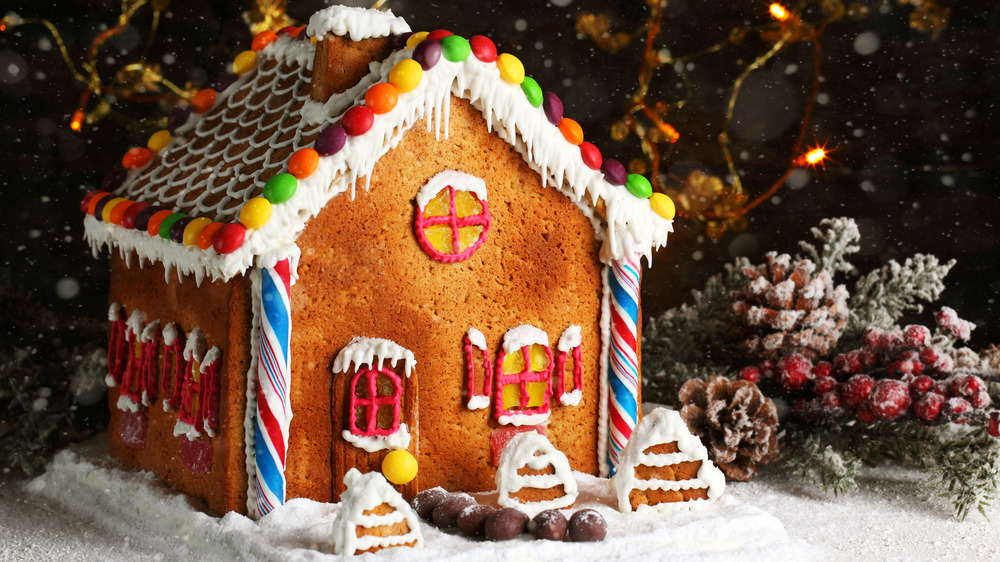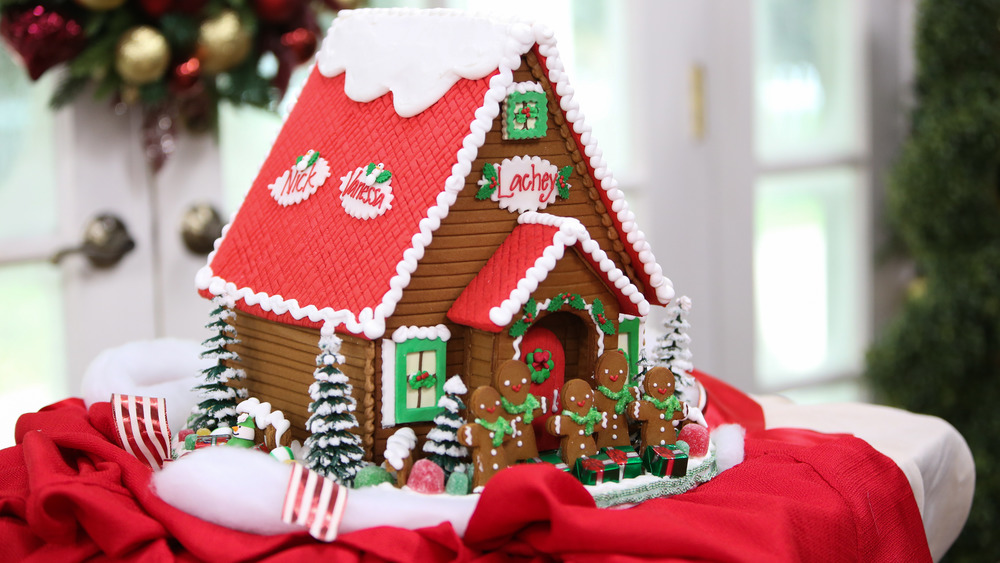The History Of Gingerbread Houses Explained
One of the most family-oriented holiday traditions is making gingerbread houses. A staple of Christmas, gingerbread houses can be as simple as two rectangles leaning on each other, to mansions recreating some of the world's most famous palaces. Gingerbread houses are a tradition for a reason. But why do we make houses out of gingerbread, instead of just eating it straight as a cookie?
There's plenty of history around gingerbread and gingerbread houses. Ginger was first cultivated in ancient China and brought over to Europe via the Silk Road, explains PBS. In the Middle Ages, people used ginger to mask the taste of preserved meat as well as treat a variety of health issues, including, oddly, the plague.
Ginger wasn't put in a sweet concoction until the late Medieval era, when cookies with ginger were displayed in fairs. Bakers shaped these cookies as animals or royalty and decorated them with gold leaf. As legend has it, Queen Elizabeth I popularized decorating gingerbread men after she made some depicting visiting dignitaries, said Spruce Eats. Gingerbread cookies became so popular that the festivals became known as Gingerbread Fairs. People would come together and shape gingerbread cookies based on the season. It got so fancy that decorated gingerbread cookies became synonymous with rich people. There's even an expression, "take the gilt off the gingerbread," referring to the gold leaf that was used in the cookies.
A fairy tale made it famous
Houses made with gingerbread, though, didn't come around until the 16th century, thanks to a decidedly un-Christmas event. According to Smithsonian Magazine, it was the Brothers Grimm and their story "Hansel and Gretel" that made gingerbread houses famous. People already made gingerbread houses before the fairy tale was published. But the idea of a highly decorated house made of gingerbread became closely tied to the story. After all, the witch's house was made of bread (in later versions, gingerbread) decorated with tons of candy.
At first, gingerbread houses weren't even made during Christmas. It was more of a whenever-they-felt-like-it type of project. Over time, gingerbread houses gained a religious connection, with holy figures created from gingerbread, says Epicure and Culture, and soon it became a holiday tradition. German settlers brought gingerbread houses to the United States in the early 19th century. It's in the US that gingerbread house creation exploded. There are now several gingerbread house making contests across the country. Smithsonian points out that these celebrations bear more than a little resemblance to the Gingerbread Fairs of yore.
If you decorate a gingerbread house this year, you may want to scale your ambitions down and not try and replicate the biggest gingerbread house ever made. The Guardian reported the Traditions Club in Texas created a house that was about 60 feet tall. So maybe just stick to a simple house; at least then there'll be lots of candy leftover to snack on.

